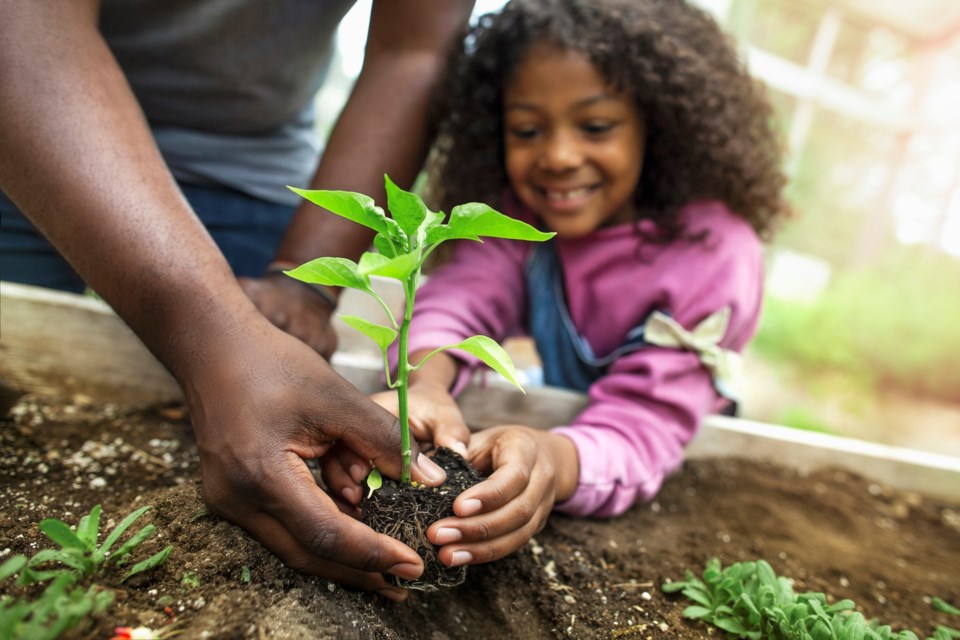There is a growing interest across Canada in outdoor education that is formally integrated into school. This trend has , particularly because open-air environments significantly reduced the risks of disease transmission.
Outdoor education is an umbrella term that includes many approaches and settings. Practitioners of outdoor education may be involved in what they see as nature-based education, place-based learning, , environmental education or experiential learning. Especially with younger children, outdoor education can be that are open-ended like buckets or blocks — .”
Outdoor education can happen in green spaces, on playgrounds, on school grounds, a nearby natural environment, garden or any other accessible place in the community.
The benefits of outdoor education
While the idea that outdoor education can be beneficial to children’s learning and development has been shared by practitioners in formal education systems , in recent decades research has documented multiple benefits from cognitive, physical, psychological and social perspectives.
At the cognitive level, outdoor education has the potential to and to to everyday situations. Even brief contact with nature can have positive effects on .
On the physical level, outdoor education .
Health research also shows that contact with nature and the .
From a psychological perspective, learning in contact with nature is known to and . Immersion in nature can even .
In terms of social outcomes, outdoor education .
Outdoor practices in school settings also provide equal opportunities for all youth to experience nature and outdoor environments in the community.
Québec study
In response to the increase in outdoor education, , guided by the following research question: What are kindergarten to Grade 11 teachers’ outdoor education practices in the province of Québec? Among the 1,008 participants in the online survey, 578 teachers practised outdoor education: 432 were kindergarten to Grade 6 teachers and 146 were Grade 7 to 11 teachers.
The three main intentions teachers shared for leading outdoor education were to connect children to nature, to use real-life contexts for learning and to benefit from being in a larger space. When discussing the benefits of being in a larger space, teachers did not specifically but rather simply having more room for learning activities.
Two categories of teachers stood out: kindergarten teachers, for their focus on letting students initiate free play, and physical and health education teachers, for their focus on engaging students in sports activities.
Challenges and solutions
Since teachers generally practise outdoor education on a voluntary basis, they identified challenges and solutions. Although weather conditions are unpredictable and students aren’t always dressed properly, students can adapt to outdoor learning and embrace the Québec climate when they wear proper clothing. As many teachers say, there is no bad weather, only bad clothing.
Other teachers see outdoor environments as an opportunity for students to learn to , rather than a harmful or hazardous place.
Although the outdoors is different from classrooms, many teachers see the differences as an opportunity to creatively address challenges and develop partnerships in the community. Some examples include asking the municipality or a private landowner to take care of a green space, meeting with seniors who are familiar with the history of the community or approaching an organization for sport equipment loans.
Our research also shows that in the outdoors, learning is everywhere, whether it’s the development of knowledge or skills. All fields and many skills can be addressed. For example:
-
physical competence is enhanced through gaining motor skills;
-
developing languages can happen through a writing project;
-
students can gain mathematics skills through measuring perimeters or areas;
-
students gain insight into biodiversity and ecosystems through science lessons outdoors;
-
through a historical walk examining the built environment students can learn about the humanities, social sciences and arts;
-
through outdoor sports students grow skill and knowledge of physical and health education.
Key messages for policies
For outdoor education to flourish in educational settings, policymakers can play an important role:
-
Adapt school yards to allow schools to maximize the potential of outdoor education.
-
Consider outdoor education as a way to achieve equity among students, by offering .
-
Value outdoor education to increase the legitimacy of these practices among the entire educational community and communities at large.
-
Consider outdoor education as a way of increasing the well-being of students and teachers.
Research Chair in outdoor education
The Université de Sherbrooke recently created a , held by one of the authors of this story, .
The overall goal of this new research chair role is to advance knowledge and practices in the field of outdoor teaching and learning in school settings. An additional objective is to develop a diverse scientific workforce through influencing school practices. The other author of this story, is president of the scientific committee supporting this larger work.
We hope many practitioners, policy makers and researchers across Canada and worldwide will join us to develop world-class research for students’ benefit.
![]()
Jean-Philippe Ayotte-Beaudet receives funding from SSHRC and FQRSC. The Quebec MInistry of Education funds the Research Chair in Outdoor Education.
Felix Berrigan receives funding from CRSH, IRSC, and MEQ.





